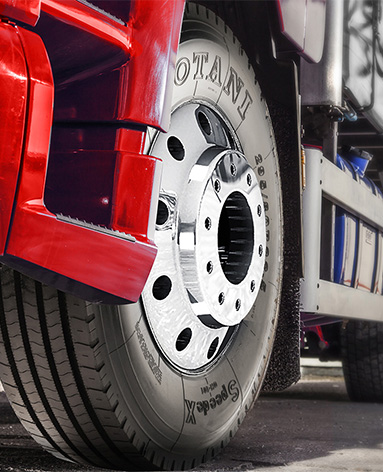Nov . 01, 2024 05:54 Back to list
Understanding Brake Drum Couplings for Enhanced Performance and Safety in Automotive Applications
Understanding Brake Drum Couplings
Brake drum couplings play a crucial role in various mechanical systems, particularly in vehicles and machinery where rotational motion needs to be effectively terminated or controlled. These components are designed to transfer torque between shafts while accommodating misalignments and absorbing vibrations, which enhances the overall durability of the system.
What is a Brake Drum Coupling?
A brake drum coupling consists of a brake drum that is typically mounted on a rotating shaft. When engaged, the brake drum works in conjunction with brake pads to provide frictional resistance, effectively slowing down or stopping the rotation of the shaft. This mechanism is vital for safe vehicle operation, preventing uncontrolled movement and ensuring stability during both motion and halting procedures.
Key Components and Functionality
The primary components of a brake drum coupling include the brake drum itself, brake shoes, and a hydraulic or mechanical actuation system. The brake drum is usually made of cast iron or a composite material to withstand high temperatures generated during braking. The brake shoes are lined with friction material that comes into contact with the drum to provide the necessary stopping power.
When the brake is engaged, the actuation system either hydraulically or mechanically forces the brake shoes against the drum. This creates friction, slowing down the rotational speed of the shaft. The design of the brake drum coupling allows for effective heat dissipation, which is essential in preventing brake fade—a reduction in stopping power due to overheating.
brake drum coupling

Advantages of Brake Drum Couplings
One of the significant advantages of brake drum couplings is their ability to handle heavy loads and high torque. They are widely used in applications like trucks, buses, and heavy machinery due to their robustness and reliability. Moreover, these couplings can accommodate axial and radial misalignments between connected shafts, which is crucial in applications where precision is paramount.
Another benefit is the relatively simple installation and maintenance. Brake drum couplings can be easily installed and replaced, making them a cost-effective choice for many industries. Additionally, their design allows for easy inspection of wear patterns, enabling operators to anticipate maintenance needs before a failure occurs.
Applications in Modern Engineering
In modern engineering, brake drum couplings are employed in various applications beyond traditional vehicles. They are used in industrial machinery, conveyor systems, and even in the aerospace sector. With advancements in materials and engineering design, modern brake drum couplings are becoming more efficient, providing improved performance and longer service life.
Conclusion
In conclusion, brake drum couplings are essential components in ensuring the safety and efficiency of various mechanical systems. Their ability to provide effective torque transfer while mitigating misalignment and vibrations makes them invaluable in a wide range of industries. As technology continues to evolve, the design and functionality of brake drum couplings will likely see further advancements, making them even more integral to modern engineering solutions. Understanding these components is vital for engineers and technicians alike, ensuring they can select the right coupling for their specific applications and maintain optimal performance.
-
Durable Brake Drum MAZ for Heavy Duty Trucks | High Performance
NewsAug.26,2025
-
FUWA: Premium Quality, Reliable Performance & Innovative Solutions
NewsAug.25,2025
-
Liza Brake Drum: Superior Quality & Performance for Safe Driving
NewsAug.24,2025
-
Iveco Brake Drum | Premium OE Quality for Daily & Eurocargo
NewsAug.22,2025
-
Your Brake Drum Man: Quality & Performance Parts
NewsAug.21,2025
-
Explore Japan: Ultimate Travel Guide & Authentic Experiences
NewsAug.19,2025
